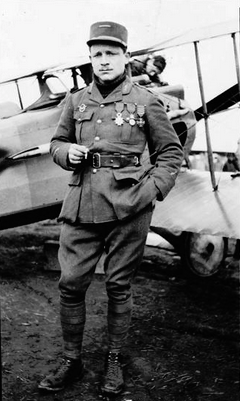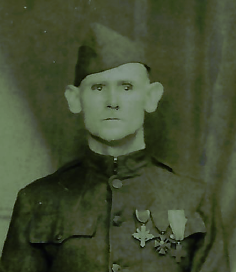|
|
|
|
April 2020

|
|
New WWI Memorial "Virtual Explorer" Beta Release available end of this week
The innovative new "National WWI Memorial Virtual Explorer" app is planning to publish its Beta Release by the end of the week and you can sign up to participate now. This innovative “Augmented Reality” smartphone app for iOS and Android will allow anyone to place a 3D model of the entire National WWI Memorial now under construction in Washington DC, INTO their living room, back yard, driveways (and someday soon their classrooms). With the app people will be able to experience, explore and discover many aspects of WWI. Click here to read more about the exciting new app, and sign up to receive the Beta Release, and get an early look at the product.
Daughters of the American Revolution Supports the National WWI Memorial

May 5, 2020 has been widely designated as “Giving Tuesday a Global Generosity Movement” to unleash the power of people and organizations to transform their communities, and the world, as a response to the unprecedented need caused by COVID-19. While you may be “Staying Home,” or are one of our “Essential Workers,” or in some cities easing your way back into public life… we want to thank you for your bravery and steadfastness, much like our WWI Doughboys. Click here to find out more.
|

French-American pilot Lt. Raoul Lufbery, shown at left in France during World War I, joined the Lafayette Escadrille, a French command volunteer group of mostly American fighter pilots that was named in honor of the French hero of the American Revolution, Marquis de Lafayette. After the U.S. entered the war in 1917, Lufbery became the commanding officer of the U.S. 94th Aero Squadron. Officially hailing from Wallingford, CT, though he never stayed in one place for long, Lufbery had served with France’s foreign service since the outbreak of World War I. Click here to read more about this aviator who is still honored today in his adopted New England hometown.
|

When the United States entered the First World War in 1917, the US Army Medical Department officials believed they had learned vital lessons about disease from the Spanish-American War. Feeling better prepared for war than ever before, and with stronger preventive measures in place, such as a proven vaccination program against smallpox and typhoid fever, its preparation still fell short of the demands that lay ahead. Neither it, nor any other medical organization in the world, could do much to cope with the influenza pandemic of 1918-1919. To combat the flu, the Army’s Medical Department relied heavily on the Army Nurse Corps. Click to read more in this in-depth article by Lisa M. Budreau, Ph.D., Senior Curator of Military History at Tennessee State Museum.
|

A man is only missing if he is forgotten.
Our Doughboy MIA this month is a little different. This month we are not featuring one man but instead featuring a whole group: the men missing from the American North Russia Expeditionary Force.
Commonly known as the ‘Polar Bears’, these men came from the 339th Infantry Regiment and 310th Engineers of the 85th Division, with the majority of the men originating from Michigan. Between 1918 and early 1920 America sent these men over as part of a multi-national task force with the allies to assist the ‘White Russian’ forces in their war against the Communist Russian forces. Their base of operations was Archangel. And while their mission was not supposed to be one of offensive action, they nevertheless suffered some 553 casualties, including a number of MIA’s.
Following the withdrawal of American forces and the eventual success of the Communist’s in the war, the Soviets refused to work with the U.S. government for repatriation of known held American POW’s and KIA remains unless the Washington would recognize the Soviet government. Washington was not ready to do so, and negotiations ended there. Then in 1929, in a rare moment of cooperation, the Soviets allowed a mission from the American organization Veterans of Foreign Wars onto Russian soil to search for missing U.S. remains. The result was the recovery of some 86 sets of remains returned to the United States. Then, once again, the doors closed until 1934, when another expedition was allowed over following then President Roosevelt’s official recognition of the Soviet government in 1933. This expedition returned with a further 14 sets of remains.
But there are still remains unaccounted for – 19 sets, in fact. Is there a possibility of locating these men? The odds seemed extremely remote. However, in 2018 a set of remains believed to be those of Sergeant Samuel Pearse, an Australian serving in the British army contingent sent to North Russia, were apparently discovered at the site of what is believed to have once been an allied military cemetery in the area of operations of the ANREF. The speculation is that American remains may also be buried there. The amateur Russian team responsible for the discovery contacted Mr. Mike Grobbel, who is not only the big kahuna of the Polar Bear Association, but also THE guy for the ANREF here at Doughboy MIA. Their announcement that they had likely located the remains was followed by a request for assistance in possibly searching for U.S. remains. The Doughboy MIA team has dug out what records we could find on the burials and the missing men and is passing all this information along to Mike, who is direct liaison to the Russians and is heading this Doughboy MIA Mission.
NOTE: with the Covid-19 thing having everyone locked down, and the necessary legalities of dealing with foreign governments and language barriers, this investigation is sort of in a holding pattern. But rest assured: we are on this and moving on it as quickly as we are able. Stay tuned!
Would you like to assist with this most difficult undertaking? You can! Making a tax deductible* donation today to the non-profit Doughboy MIA organization will go a long way toward getting us back into the National Archives – when we are allowed to – to search out paperwork we still need to make these recoveries a more serious possibility. If we’re to go to Russia and help, WE need to have the desk based research done to find these guys! Won’t you help? WE KNOW things are tight now, but they WILL get better, and the size of the donation does not matter. Give what you can and accept our deepest thanks (and theirs too). Just go to www.ww1cc.org/mia and give today. And remember:
A man is only missing if he is forgotten.
-- Robert Laplander
* Remember, because of the CARES Act, donations up to $300 ($600 for joint filers) are tax deductible, even if the tax filer cannot itemize and therefore takes the standard deduction.
|

Inspired by the iconic image of a U.S. Doughboy, you can wear your American pride with this Made in the USA polo shirt. An informal term for a member of the U.S. Army or Marine Corps, “Doughboys” especially used to refer to the American Expeditionary Forces in World War One. Largely comprised of young men who had dropped out of school to join the army, this poignant lone silhouette of a soldier in trench warfare serves as a reminder of those who sacrificed so much one century ago.
Shirt features: Navy with white Doughboy embroidery. 100% combed cotton pique, 6.2 oz. pre-shrunk fabric. Shirt has 3 wood-tone buttons, and side seam design for shape retention. Men's sizes available S – 2XL.
A portion of the proceeds from this purchase will help build the new National World War I Memorial in Washington, DC.
This and many other items are available as Official Merchandise of the United States World War One Centennial.
|
|
|
|
|

Submitted by: Jacob Parks, Administrative Support Specialist, The Country Doctor Museum
Photos provided by Eddie Lynch {Grandson}
Garland Langhorn Spain born around 1890, Garland Spain served in World War 1 with the United States Army. The enlistment was in 1917 and the service was completed in 1919.
Story of Service
Garland Langhorn Spain was born on July 17, 1890 in the small community of Jarrett’s Depot in Sussex County, Virginia to Benjamin and Josephine Gates Spain.
By 1910, Garland Spain continued living in Virginia and worked as a farmer to support his widowed mother. For reasons that are unclear, Spain relocated to Rocky Mount, N.C., where he lived at the time of his registration for World War I on June 5, 1917.
Garland Spain was inducted into military service with the U.S. Army on September 20, 1917 and took up arms as a corporeal with Company E of the 322nd Infantry, 81st Division. After training, Spain set sail on the troop transport ship Helenus on July 31, 1918 from Brooklyn, New York to Europe.
Spain received severe wounds while fighting in the Great War. Either on November 9 or 11, 1918, Garland Spain was shot twice while advancing on six German machine guns that wounded the rest of Spain’s squadron near Moranville, France.
|

|
|
|
|